Your cart is currently empty!
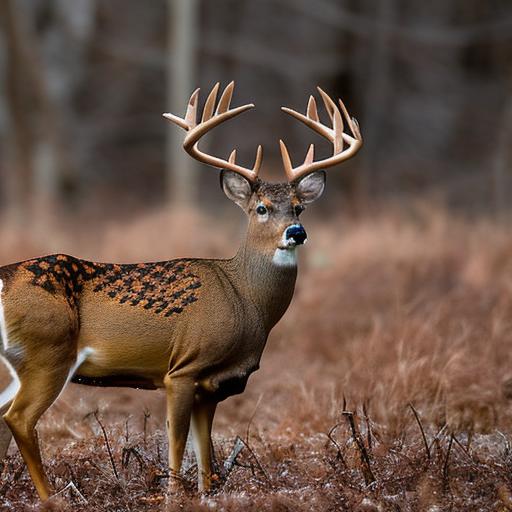
late season public land deer hunting

Late season public land deer hunting refers to hunting deer on public land during the later part of the hunting season, typically in the late fall or early winter. This is a time when many hunters have already filled their tags or lost interest, leaving the public land less crowded and giving those who are still hunting a better chance of success. Late season hunting can be a great opportunity for hunters to harvest a mature buck and enjoy the solitude of the outdoors.
Late season hunting is a great time to hunt for several reasons. First, there is less competition from other hunters. Many hunters have already filled their tags or have shifted their focus to other activities, leaving the public land less crowded. This means that you will have more space and freedom to move around and find the best hunting spots without worrying about other hunters interfering with your hunt.
Second, deer are more predictable during the late season. As the hunting pressure decreases and the weather gets colder, deer tend to become more focused on finding food and staying warm. They establish predictable patterns and routines, making it easier for hunters to anticipate their movements and set up in strategic locations.
Finally, late season hunting offers a better chance of harvesting a mature buck. By this time in the season, many younger bucks have already been taken by hunters, leaving behind the older, wiser bucks. These mature bucks are more cautious and elusive, making them a greater challenge to hunt but also more rewarding to harvest.
Key Takeaways
- Late season public land deer hunting can be a rewarding experience for hunters.
- Hunting late season public land deer can provide benefits such as less competition and more mature deer.
- Understanding the behavior of late season public land deer is crucial for successful hunting.
- Key factors to consider when hunting late season public land deer include food sources, weather, and hunting pressure.
- Strategies for finding late season public land deer include scouting, using trail cameras, and hunting near food sources.
The Benefits of Hunting Late Season Public Land Deer
One of the main benefits of hunting late season public land deer is that there is less competition from other hunters. Many hunters have already filled their tags or lost interest in hunting by this time, which means that you will have more space and freedom to move around and find the best hunting spots without worrying about other hunters interfering with your hunt. This can greatly increase your chances of success and make for a more enjoyable hunting experience.
Another benefit of hunting late season public land deer is that deer are more predictable during this time. As the hunting pressure decreases and the weather gets colder, deer tend to become more focused on finding food and staying warm. They establish predictable patterns and routines, making it easier for hunters to anticipate their movements and set up in strategic locations. This can give you a significant advantage when it comes to finding and harvesting deer.
Finally, late season hunting offers a better chance of harvesting a mature buck. By this time in the season, many younger bucks have already been taken by hunters, leaving behind the older, wiser bucks. These mature bucks are more cautious and elusive, making them a greater challenge to hunt but also more rewarding to harvest. Late season hunting gives you the opportunity to test your skills and patience as a hunter and potentially take home a trophy buck.
Understanding the Behavior of Late Season Public Land Deer
Late season public land deer behavior can be quite different from earlier in the season. As the weather gets colder and food sources become scarcer, deer tend to change their behavior in order to survive. Understanding these changes in behavior can greatly increase your chances of success when hunting late season public land deer.
During the late season, deer become more focused on finding food and staying warm. They will often establish predictable patterns and routines, such as feeding in the same areas at certain times of day or bedding down in specific locations. By scouting these areas and identifying these patterns, you can set up in strategic locations and increase your chances of encountering deer.
When scouting for late season public land deer, it is important to look for signs of deer activity such as tracks, droppings, rubs, and scrapes. These signs can give you valuable information about where deer are feeding, bedding, and traveling. Pay attention to areas with abundant food sources such as standing crops or areas with leftover mast, as these are likely to attract deer during the late season.
Key Factors to Consider When Hunting Late Season Public Land Deer
When hunting late season public land deer, there are several key factors to consider that can greatly impact your chances of success. These factors include weather conditions, food sources, and hunting pressure.
Weather conditions play a crucial role in late season deer behavior. As the weather gets colder, deer will be more focused on finding food and staying warm. Pay attention to weather patterns and try to hunt during periods of cold temperatures or when a storm is approaching. Deer are more likely to be active and moving during these times, increasing your chances of encountering them.
Food sources are another important factor to consider when hunting late season public land deer. As the season progresses and food becomes scarcer, deer will be more concentrated around areas with abundant food sources. Look for standing crops, areas with leftover mast, or food plots that have been planted specifically for deer. These areas can attract deer and provide you with a good opportunity for a successful hunt.
Hunting pressure is also an important factor to consider when hunting late season public land deer. As the season progresses, many hunters have already filled their tags or lost interest in hunting, leaving the public land less crowded. However, there may still be some hunting pressure in certain areas. Try to find areas that are less accessible or overlooked by other hunters. This can give you a better chance of encountering deer that have not been disturbed by other hunters.
Strategies for Finding Late Season Public Land Deer
When it comes to finding late season public land deer, there are several strategies that can greatly increase your chances of success. These strategies include scouting techniques, using trail cameras, and identifying travel routes.
Scouting is an essential part of any successful hunt, and it becomes even more important during the late season when deer behavior is changing. Spend time in the field scouting for deer sign such as tracks, droppings, rubs, and scrapes. Look for areas with abundant food sources and signs of deer activity. By scouting these areas, you can identify the best locations to set up and increase your chances of encountering deer.
Trail cameras can also be a valuable tool for finding late season public land deer. Set up trail cameras in strategic locations such as food sources or travel corridors and check them regularly to see if any deer are frequenting the area. Trail cameras can provide you with valuable information about deer movement patterns and help you determine the best locations to set up for a successful hunt.
Identifying travel routes is another important strategy for finding late season public land deer. As the season progresses and food becomes scarcer, deer will establish predictable travel routes between their feeding and bedding areas. Look for well-worn trails or funnels that deer are likely to use when traveling. By setting up along these travel routes, you can increase your chances of encountering deer during the late season.
Selecting the Right Hunting Gear for Late Season Public Land Deer Hunting
Selecting the right hunting gear is crucial for late season public land deer hunting. The right gear can keep you comfortable, safe, and increase your chances of success. When it comes to clothing and footwear, it is important to dress in layers and wear insulated, waterproof clothing to stay warm and dry in cold weather conditions. Insulated boots with good traction are also essential for navigating through snow or wet terrain.
In terms of hunting equipment, a reliable firearm or bow is essential for harvesting a deer. Make sure your equipment is properly sighted in and in good working condition before heading out into the field. It is also important to have a good quality backpack to carry your gear, as well as a comfortable and sturdy tree stand or ground blind if you plan on hunting from an elevated position.
Safety gear is another important consideration when hunting late season public land deer. It is crucial to wear blaze orange clothing to make yourself visible to other hunters. This is especially important during the late season when there may still be some hunting pressure in certain areas. It is also important to have a first aid kit, a compass or GPS device, and a cell phone or two-way radio for emergencies.
Safety Tips for Late Season Public Land Deer Hunting
Safety should always be a top priority when hunting, and this is especially true when hunting late season public land deer. There are several safety tips that hunters should keep in mind to ensure a safe and enjoyable hunting experience.
One of the most important safety tips for late season public land deer hunting is to always wear blaze orange clothing. This is required by law in many states and is crucial for making yourself visible to other hunters. Even if you are hunting in an area with less hunting pressure, it is still important to wear blaze orange to ensure your safety.
Staying warm and dry is another important safety tip for late season public land deer hunting. Cold temperatures and wet conditions can lead to hypothermia or frostbite if you are not properly prepared. Dress in layers and wear insulated, waterproof clothing to stay warm and dry throughout your hunt. It is also important to bring extra clothing and gear in case of unexpected weather changes.
Being aware of your surroundings is another crucial safety tip for late season public land deer hunting. Pay attention to other hunters in the area and make sure you know where they are at all times. Be cautious when moving through the woods and avoid making sudden movements or loud noises that could startle other hunters or wildlife.
The Importance of Proper Scouting for Late Season Public Land Deer Hunting
Proper scouting is essential for late season public land deer hunting. Scouting allows you to gather valuable information about deer behavior, identify the best locations to set up, and increase your chances of success. There are several key factors to consider when scouting for late season public land deer.
One of the most important aspects of scouting for late season public land deer is identifying deer sign. Look for tracks, droppings, rubs, and scrapes to determine where deer are feeding, bedding, and traveling. Pay attention to areas with abundant food sources such as standing crops or areas with leftover mast, as these are likely to attract deer during the late season.
Understanding the terrain is another important aspect of scouting for late season public land deer. Pay attention to the topography of the land and look for natural features such as ridges, valleys, or funnels that can funnel deer movement. These features can help you determine the best locations to set up and increase your chances of encountering deer.
Scouting can also involve using trail cameras to gather information about deer movement patterns. Set up trail cameras in strategic locations such as food sources or travel corridors and check them regularly to see if any deer are frequenting the area. Trail cameras can provide you with valuable information about deer behavior and help you determine the best locations to set up for a successful hunt.
Techniques for Successful Late Season Public Land Deer Hunting
There are several techniques that can greatly increase your chances of success when hunting late season public land deer. These techniques include stand placement, calling techniques, and shot placement.
Stand placement is a crucial technique for successful late season public land deer hunting. Look for areas with abundant food sources or travel routes and set up your stand in a location that provides good visibility and shooting lanes. It is important to be patient and wait for the right opportunity to take a shot, as deer may be more cautious and elusive during the late season.
Calling techniques can also be effective for attracting late season public land deer. Use grunt calls or rattling antlers to mimic the sounds of other deer and attract bucks during the rut. However, it is important to use these calls sparingly and realistically, as deer may be more cautious and less responsive to calling during the late season.
Shot placement is another important technique for successful late season public land deer hunting. Aim for the vitals, which include the heart and lungs, to ensure a quick and ethical kill. Practice shooting from different positions and distances to become comfortable and accurate with your weapon. It is also important to be patient and wait for the right shot opportunity, as deer may be more cautious and less likely to present a clear shot during the late season.
The Rewards of Late Season Public Land Deer Hunting
Late season public land deer hunting offers a unique set of challenges and rewards for hunters. The decreased competition from other hunters, the predictability of deer behavior, and the opportunity to harvest a mature buck make late season hunting a great option for those who are willing to brave the cold weather and put in the effort.
While late season hunting may require more patience and persistence than earlier in the season, the rewards can be well worth it. The solitude of the outdoors, the thrill of encountering a mature buck, and the satisfaction of a successful hunt are all part of what makes late season public land deer hunting so rewarding.
If you haven’t tried late season public land deer hunting before, I encourage you to give it a try. Take the time to scout your hunting area, understand deer behavior, and select the right gear for the conditions. Be patient, stay safe, and enjoy the experience of being in nature. Remember to always hunt ethically and responsibly, respecting both the wildlife and other hunters around you.
If you’re an avid hunter looking to maximize your late season public land deer hunting success, you won’t want to miss this informative article on “What Time Are Deer Most Active in the Morning?” The Old Oak Syndicate provides valuable insights into the behavior and patterns of deer during the early hours of the day. Understanding when deer are most active can greatly enhance your chances of a successful hunt. So, grab your gear and check out this article to gain a competitive edge in your pursuit of trophy bucks. Read more here.
FAQs
What is late season public land deer hunting?
Late season public land deer hunting refers to the period of time towards the end of the deer hunting season when hunters can hunt deer on public land.
When does the late season public land deer hunting start?
The start of the late season public land deer hunting varies depending on the state and region. Generally, it starts in December and lasts until the end of January.
What are the benefits of late season public land deer hunting?
Late season public land deer hunting offers several benefits, including less hunting pressure, increased chances of success, and the opportunity to hunt mature bucks.
What are the challenges of late season public land deer hunting?
The challenges of late season public land deer hunting include harsh weather conditions, limited daylight hours, and the need for specialized hunting gear.
What hunting gear is necessary for late season public land deer hunting?
Hunters need specialized hunting gear for late season public land deer hunting, including warm clothing, insulated boots, gloves, and hats, as well as scent control products, deer calls, and tree stands.
What are the hunting regulations for late season public land deer hunting?
Hunting regulations for late season public land deer hunting vary depending on the state and region. Hunters should check with their state’s wildlife agency for specific regulations, including bag limits, hunting hours, and weapon restrictions.
What are some tips for late season public land deer hunting?
Some tips for late season public land deer hunting include scouting the area before hunting, using scent control products, hunting near food sources, and being patient and persistent.

Herb has been a longtime lover of the outdoors. Whether it be hunting, camping, fishing or just getting outside to reset. Proud father and animal lover. Bourbon anyone?

by
Tags:
Comments

Categories
- Big Game Hunting (301)
- Deer (202)
- Reviews (3)
- Shooting (16)
- Slingshot (1)
- Small Game Hunting (42)
- Upland Hunting (126)
- Waterfowl Hunting (3)

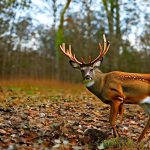
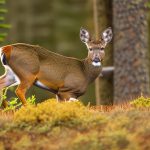
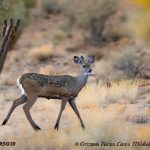
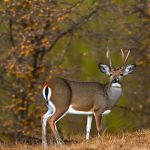
Leave a Reply